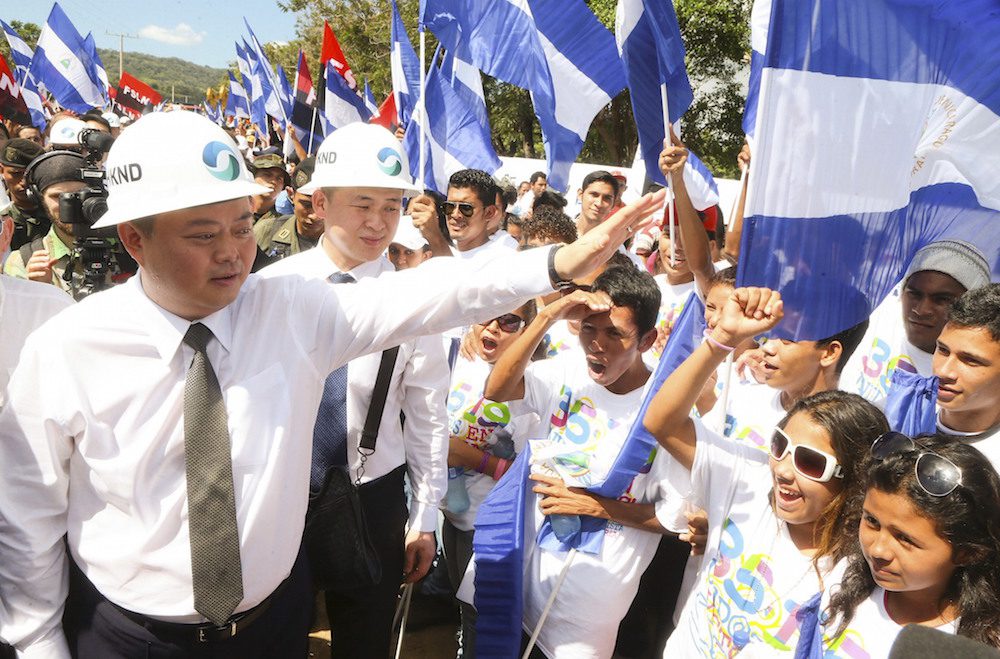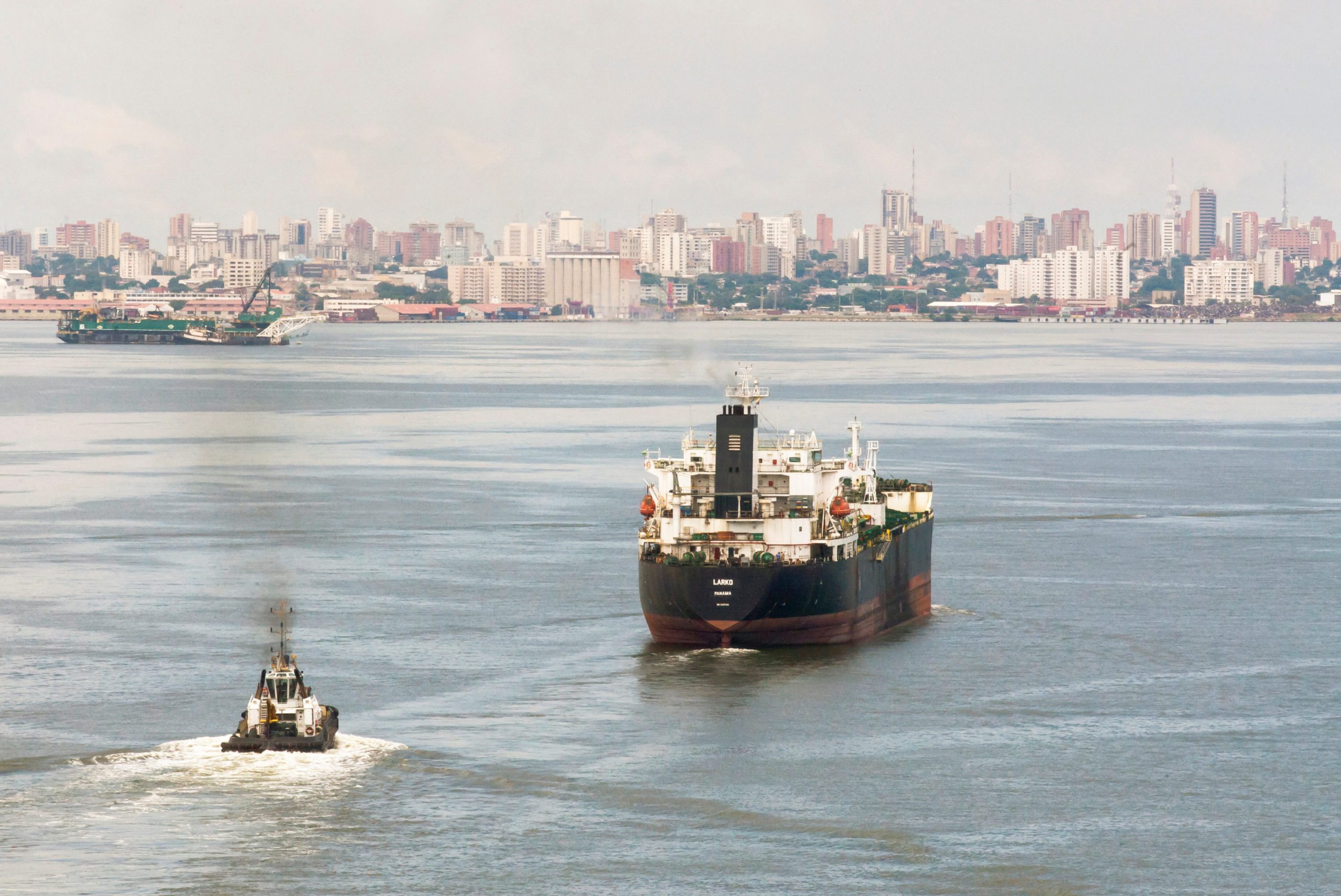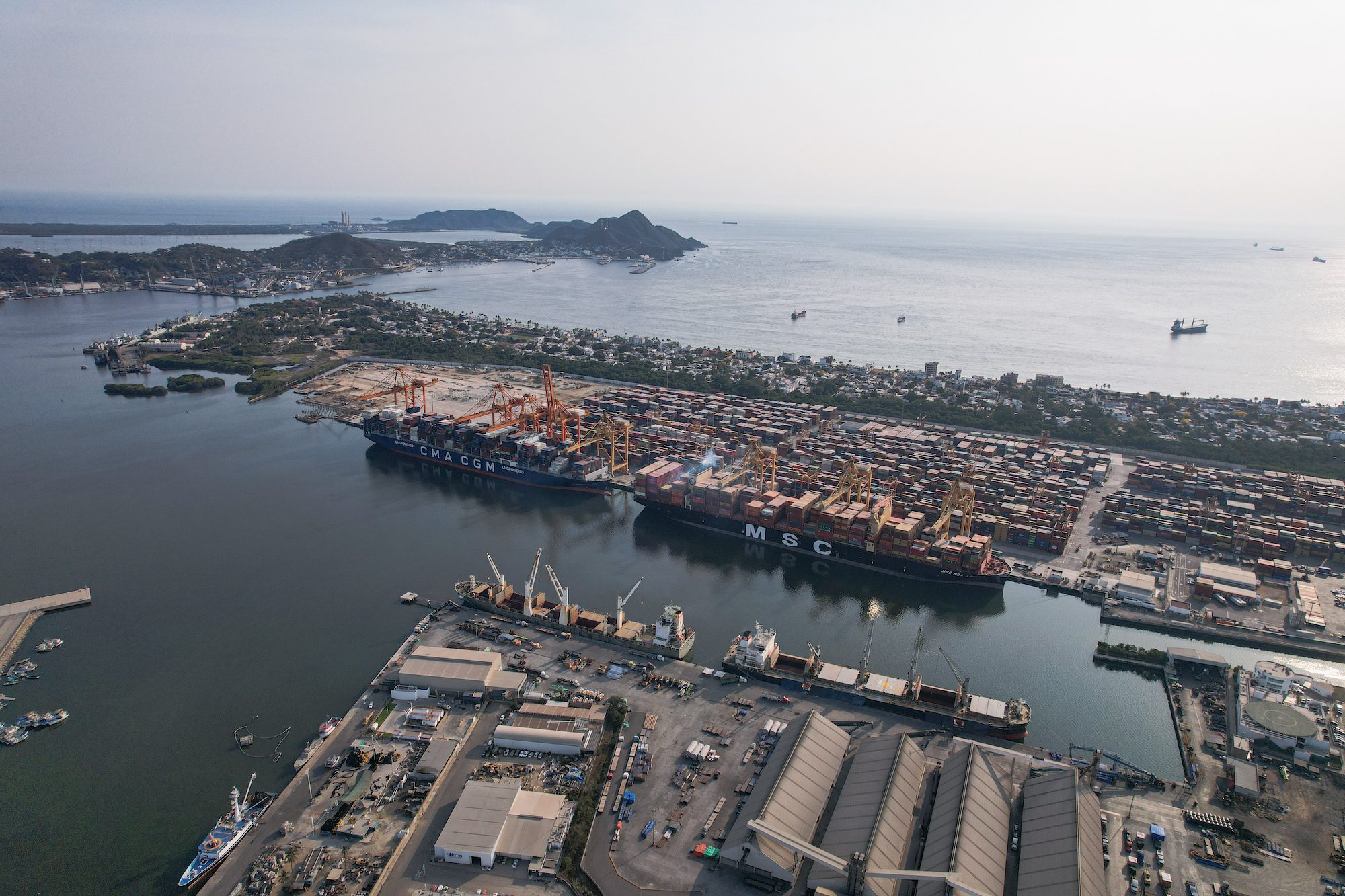HK Nicaragua Canal Development Investment Co Ltd (HKND Group) Chairman Wang Jing young people during the ceremonial start of construction of the Interoceanic Grand Canal, aka the Nicaragua Canal, in Brito town December 22, 2014. REUTERS/Jairo Cajina/Presidential Palace Nicaragua/Handout
By Michael McDonald
(Bloomberg Business) — Deep on the southeastern side of Lake Nicaragua, along a bumpy dirt road that climbs gently through lush-green forest, sits the tiny town of El Tule. It is quintessential rural Central America: Chickens roam outside tin- roofed homes while pigs stand tied to trees, awaiting slaughter; the sound of drunk locals singing along to ranchera music greeted visitors on a recent rain-soaked afternoon.
The village, if you listen to Nicaraguan officials, is a key point in what will be the biggest infrastructure project the region has ever seen, the construction of a $50 billion canal slated to run 170 miles from the country’s east to west coast. Awarded two years ago by President Daniel Ortega to an obscure Chinese businessman named Wang Jing, the concession calls for El Tule to be ripped up, erased essentially, in order to make way for the canal right before it plunges into the lake and then meets the Pacific Ocean a few miles later.
The idea is that the waterway will attract many of the larger vessels that the Panama Canal — located just 300 miles to the southeast — has historically struggled to accomodate. A construction deadline of 2020 has been set. Yet a four-day tour through El Tule and surrounding areas slated for crucial initial development only seemed to corroborate the belief, harbored by many analysts inside and outside Nicaragua, that this project isn’t going to get done.
The townspeople haven’t seen any signs of canal workers in months. And the work that was done was marginal. A handful of Chinese engineers were spotted late last year making field notations on the east side of the lake; early this year, a dirt road was expanded and light posts were upgraded at a spot on the west side where a port is to be built.
Juharling Mendoza, a 32-year-old local entrepreneur, is so convinced that the project won’t proceed that he’s constructing a two-story house with three guest rooms and an attached convenience store just outside of El Tule. He says bluntly: “There isn’t going to be a canal.”
It is true, as supporters of the canal quickly point out, that public works of this magnitude tend to move in fits and starts. The Panama Canal itself was decades in the making. However, for a project that made so little sense to so many skeptics from the very beginning, the almost non-existent initial progress — along with the struggles to raise financing — is only fanning those doubts.
Sverre Svenning, a shipping expert at Oslo-based Fearnley Consultants AS, notes that Panama’s current $5 billion canal expansion will allow it to better accomodate today’s bigger tankers. Overall traffic, he says, isn’t strong enough to sustain a second route. And then there are the massive engineering and environmental challenges to overcome, like making sure the country’s volcanos don’t disrupt the canal, according to Eric Farnsworth, vice president of the Council of the Americas. “I’m very skeptical,” he said.
Conspiracy Theories
Many people doubt that Ortega — a former guerrilla who rose to international fame when he defeated U.S.-backed forces in the 1980s — and his Chinese partners ever truly intended to build a canal.
Conspiracy theories abound as to what their real intentions are. It has become something of its own cottage industry. A small sampling: The project is a land grab by Ortega; or a tool to whip up support ahead of next year’s elections; or a Chinese plan to threaten U.S. hegemony in the region by mapping out infrastructure designs so close to its shores.
While Wang, a billionaire who made his fortune largely in the telecom industry, hasn’t received official public backing from Beijing, China watchers say it’s unlikely he’d have signed such a deal without getting the green light at first from home.
In extending its influence throughout Latin America and the rest of the developing world, China’s record on these mega projects is spotty. Several have been put on hold long after companies began the work, like a $3.5 billion resort in the Bahamas and a $1.3 billion refinery upgrade in Costa Rica.
Back in a 2013 interview, Wang made it clear he was aware of the public perception. “I don’t want it to become a joke or an example of a failed overseas Chinese enterprise,” he said.
In response to questions this week, Wang’s Hong Kong-based HKND Group said construction of the port on the Pacific Coast will begin this year, a position echoed in Managua by Manuel Colonel Kautz, the head of the country’s new canal authority. HKND said it’s waiting for the Nicaraguans to sign off on the environmental impact study before proceeding and that it’s held talks with companies across the globe looking to invest.
Ortega’s press office declined to comment.
Vanderbilt’s Failure
The dream of a canal cutting across Nicaragua dates back centuries. Before Teddy Roosevelt and the Americans settled on Panama, Nicaragua was the top pick for an inter-oceanic waterway that would end the need for ships to make the long trek around Cape Horn. Railroad magnate Cornelius Vanderbilt even took a shot at building one in the 1850s. The mast of his dredge boat still stands as a symbol of that failure, rising out of a lagoon in southeast Nicaragua.
The job looks no easier today really than it did then.
It will require 16 million cubic meters of concrete, nearly one million tons of rebar and steel and the excavation of 4 billion cubic meters of rock and soil. Nearly all of these materials — as well as the bulldozers and cranes — will have to be imported, HKND says. The $50 billion price tag is almost five times the annual economic output in Nicaragua, the poorest nation in Central America.‘Go Away’
In a country with little independent polling, it’s hard to gauge support for the project. Traveling along the canal route last month, the most common concerns heard were about eviction and, to a lesser extent, the environmental impact.
In Rio Grande, a town along the Pacific Coast, Antonia Ponce was adamant that she’s not moving. “Only over my dead body,” she said. Her 19-year-old granddaughter, Tatiana, then pulled out a sign she made last year when the Chinese workers showed up to work on the road. In Chinese lettering surrounded by an axe and machete, emblems of the Nicaraguan countryside, it reads: “Go Away, Chinamen.”
But the overriding sentiment on the ground was skepticism.
A few miles to the west of Rio Grande, in a village where oxen-pulled wooden carts pass through empty dirt streets, a rancher named Jose Mena Cortez said he’s seen all this before — the bold promises from politicians of public works and growth. “They always come with big plans,” he said. “And they never do anything.” —With Haixing Jin
©2015 Bloomberg News
Unlock Exclusive Insights Today!
Join the gCaptain Club for curated content, insider opinions, and vibrant community discussions.

 Join The Club
Join The Club











